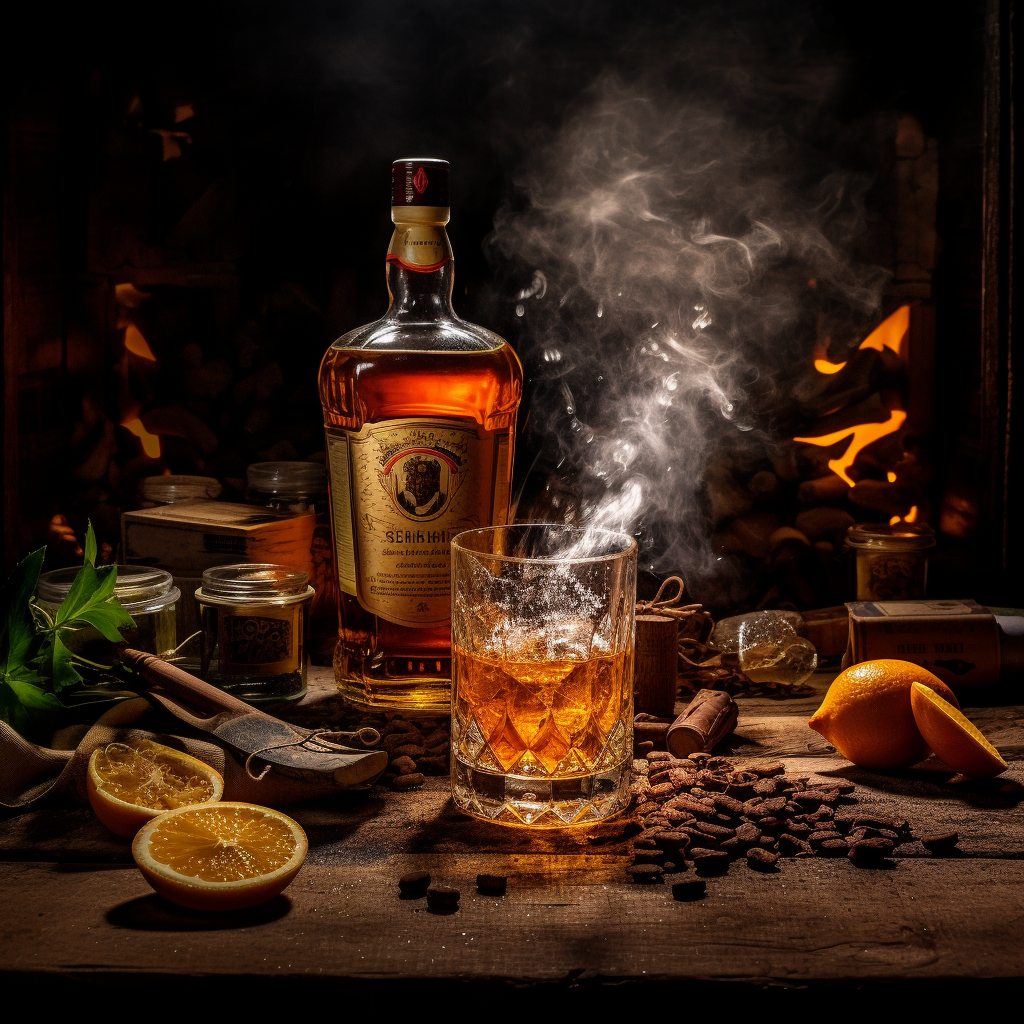Immerse yourself in the captivating realm of blended whiskey, a testament to the art of marrying diverse whiskey flavors into a harmonious symphony of taste and aroma. This style of whiskey transcends the traditional single malts or grain whiskeys, skillfully blending the nuances of various whiskeys to create a balanced, smooth, and consistent blend.
In this exploration, we will contrast blended whiskey with single malts and single grains, delve into the artistry of blending, introduce popular blended brands, and guide you through the enjoyment of blended whiskey drinks.
Definition and Types of Blended Whiskey
Blended whiskey is a masterful concoction of various types of whiskeys, often mingled with neutral grain spirits, resulting in a product that is marked by its consistent flavor profiles and distinct characteristics. This blend can encompass a wide range of malts and grains from different distilleries, offering a flavor palette that single grain or single malt whiskeys might not achieve on their own.
Let’s delve into the three main types of blended whiskey, each with its unique composition:
-
Blended Malt Whiskey: Also referred to as vatted malt or pure malt, this blend comprises entirely of malt whiskeys from two or more distinct distilleries. Monkey Shoulder, a blend of three different Scottish single malts, is a prime example of this type.
-
Blended Grain Whiskey: True to its name, this blend combines grain whiskeys from multiple distilleries. The result is a lighter, smoother, and less intricate blend.
-
Blended Scotch Whiskey: This widely recognized type merges both malt and grain whiskeys. Brands like Johnnie Walker and Chivas Regal are renowned for this type of blend, delivering unmatched consistency and depth of flavor.
Each of these blended whiskeys offers a unique flavor profile, demonstrating the vast diversity that this form of whiskey brings to your glass.
Comparing Blended Whiskey to Single Malt and Single Grain
To truly savor the complexity of blended whiskey, it’s essential to understand how it contrasts with single malt and single grain varieties. Single malt whiskey, crafted exclusively from malted barley at a single distillery, showcases the unique character and flavor profile of its origin. Similarly, single grain whiskey, while also produced at one distillery, can incorporate various grains, adding to its distinctiveness.
These single-origin whiskeys, with their unique set of ingredients and production methods, offer a depth of flavor that reflects the individual character of the malt or grain. This results in a diverse range of tastes across different distilleries.
Blended whiskey, however, is a symphony of flavors from various distilleries, masterfully combined to achieve a balanced and consistent profile. The art of blending aims to create a taste that can be faithfully reproduced, year after year, offering a consistent experience for the whiskey enthusiast.
While single malt and single grain whiskeys highlight their individual components – water, barley, yeast, and the aging process – blended whiskeys present a harmonious medley of flavors, providing a unique tasting experience each time. It’s not about superiority or inferiority between blends and single-origin whiskeys, but rather a matter of personal preference and the exploration of diverse whiskey experiences.
Popular Blended Whiskey Brands
Embarking on a journey through the realm of blended whiskeys can be a thrilling yet daunting experience. The sheer diversity and complexity of flavors can be overwhelming. To guide you on this voyage, we’ve curated a selection of distinguished blended whiskey brands that are sure to delight both novices and seasoned aficionados alike.
Johnnie Walker, a name that resonates globally, presents an array of blended whiskeys. From everyday selections to luxurious aged blends, there’s something for everyone. Their renowned Red Label and Blue Label each boast distinct flavor profiles.
Chivas Regal, celebrated for its 12-year-old blend, is a cornerstone in the blended whiskey universe. Its blends are known for their smoothness and a captivating fusion of fruit, honey, and herb flavors.
Jameson, a beloved Irish brand, is acclaimed for its blended whiskey. Triple-distilled and aged for at least four years, Jameson’s blends are smooth with hints of vanilla, cream, and spice.
Monkey Shoulder, although a newcomer to the whiskey scene, has quickly gained favor with its exquisitely smooth and flavor-rich blended malt whiskeys.
Crown Royal, a representative of Canadian blended whiskies, is a widely recognized brand. Its blends are lauded for their smoothness, balanced sweetness, and subtle oakiness.
Dewar’s, recognized for its double-aged for extra smoothness process, offers Scottish blended whiskeys with layers of flavors that gradually reveal themselves, providing a truly delightful whiskey experience.
Each brand has its own unique blending and aging techniques, leading to unique flavor profiles. Exploring these is an adventure in itself. Remember, the true pleasure of whiskey lies in the tasting, so don’t hesitate to discover your personal favorite!
Blended Whiskey Cocktails
Blended whiskey is not only savored neat or on the rocks but also serves as an excellent base for a range of delectable cocktails. Its smoother, more balanced flavor profile blends seamlessly with other ingredients. Whether you’re craving a classic cocktail or eager to experiment with something new, blended whiskey can satisfy your palate. Let’s explore some traditional and innovative cocktails that you can concoct using your bottle of blended whiskey.
Classic and Innovative Blended Whiskey Cocktails
The versatility of blended whiskey opens up a world of cocktail possibilities, from time-honored classics to inventive new concoctions. Here’s a selection of both traditional and innovative cocktails you can create at home with a bottle of blended whiskey.
The Old Fashioned, a staple in the whiskey cocktail world, is a simple yet sophisticated blend of whiskey, sugar, Angostura bitters, and water, adorned with an orange slice and a cherry. The Whiskey Sour, another classic, marries the robust flavor of whiskey with the tangy freshness of lemon juice and a hint of sugar, typically garnished with a cherry and orange slice.
For Negroni lovers, the Boulevardier offers a delightful alternative, replacing gin with whiskey and combining it with Campari and sweet vermouth in equal parts, resulting in a stunning ruby-colored cocktail. And for a warming after-dinner drink, the Irish Coffee blends hot coffee, Irish whiskey, sugar, and a layer of cream.
In the spirit of innovation, consider adding a twist to these classics. A Blackberry Lemon Old Fashioned introduces a fruity element by muddling blackberries and incorporating a dash of homemade lemon syrup. A Gingered Whiskey Sour adds a zingy kick with fresh ginger syrup, enhancing the depth of flavor. Or try a Maple Boulevardier, where traditional sweet vermouth is replaced with maple syrup for a unique, velvety variation.
Remember, the art of cocktail making is about personal preference and creativity. Feel free to adjust these recipes to suit your taste. Happy mixing!
Enjoying Blended Whiskey
Embarking on the blended whiskey journey is an exploration of rich flavors, diverse aromas, and pure pleasure. Savoring each sip, from the initial aroma to the satisfying finish, is key to a rewarding whiskey experience. But how can you enhance this experience even further? The choice of glassware, tasting techniques, and food pairings can significantly elevate your whiskey enjoyment. Let’s delve into these elements.





